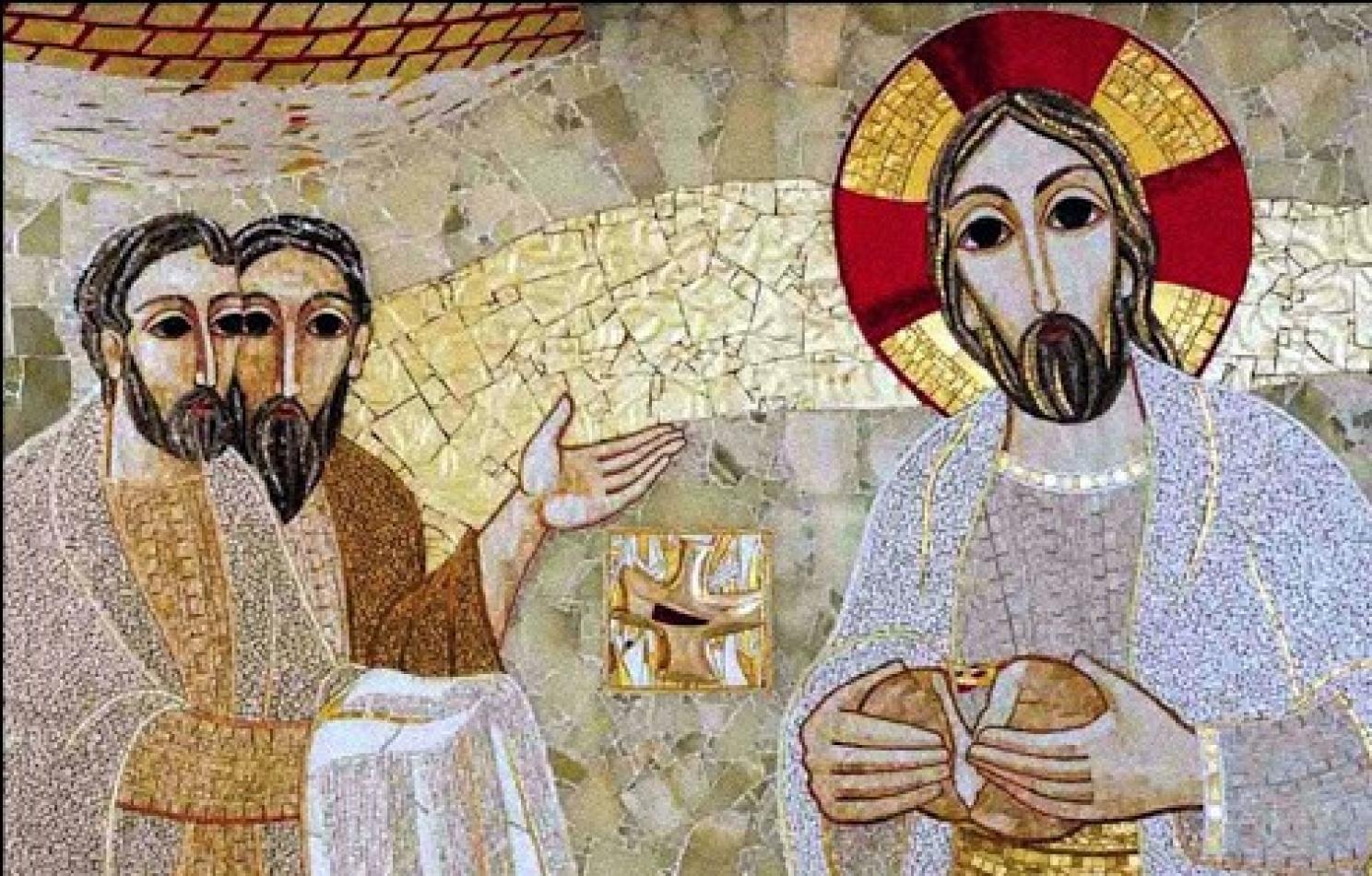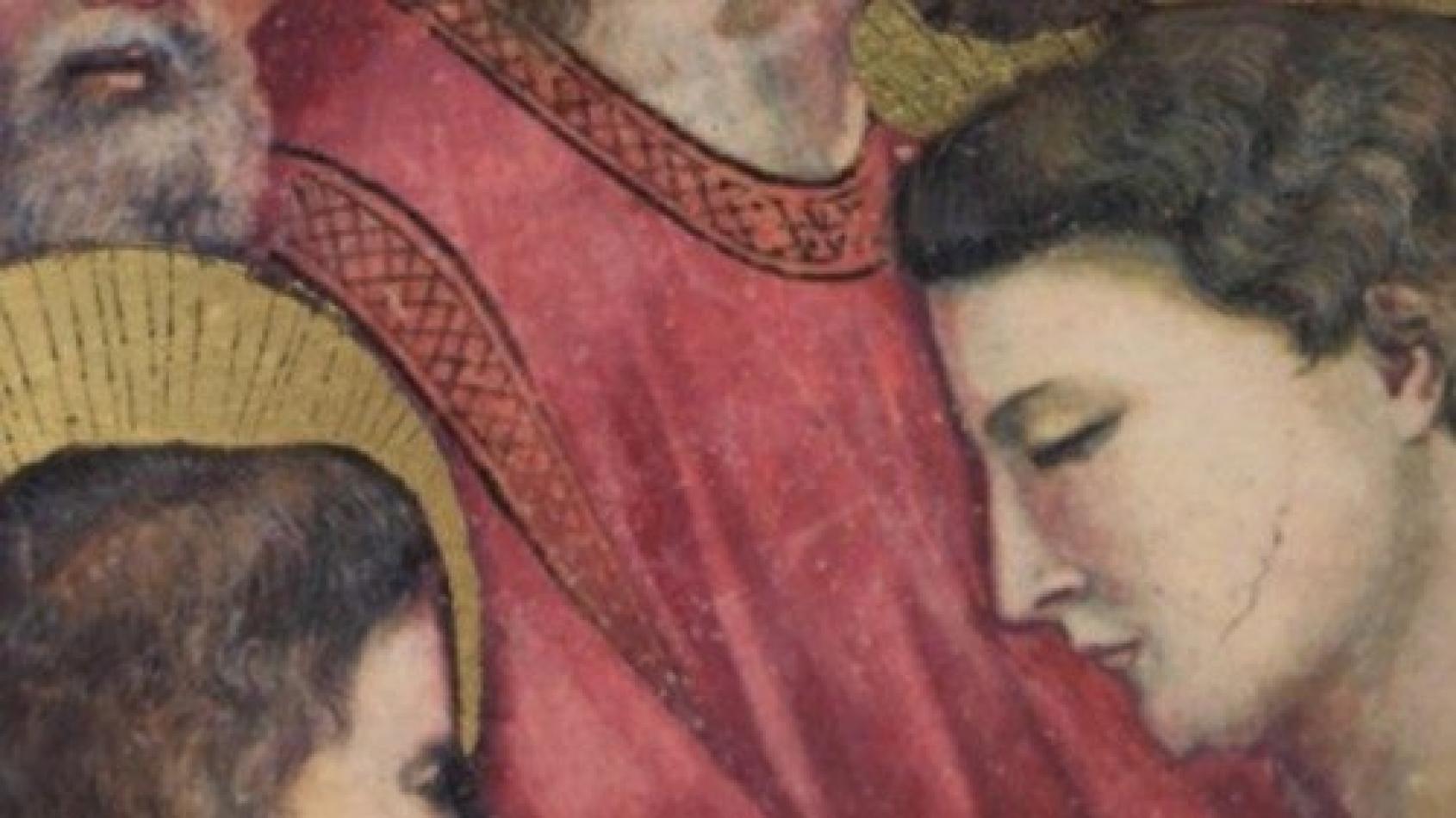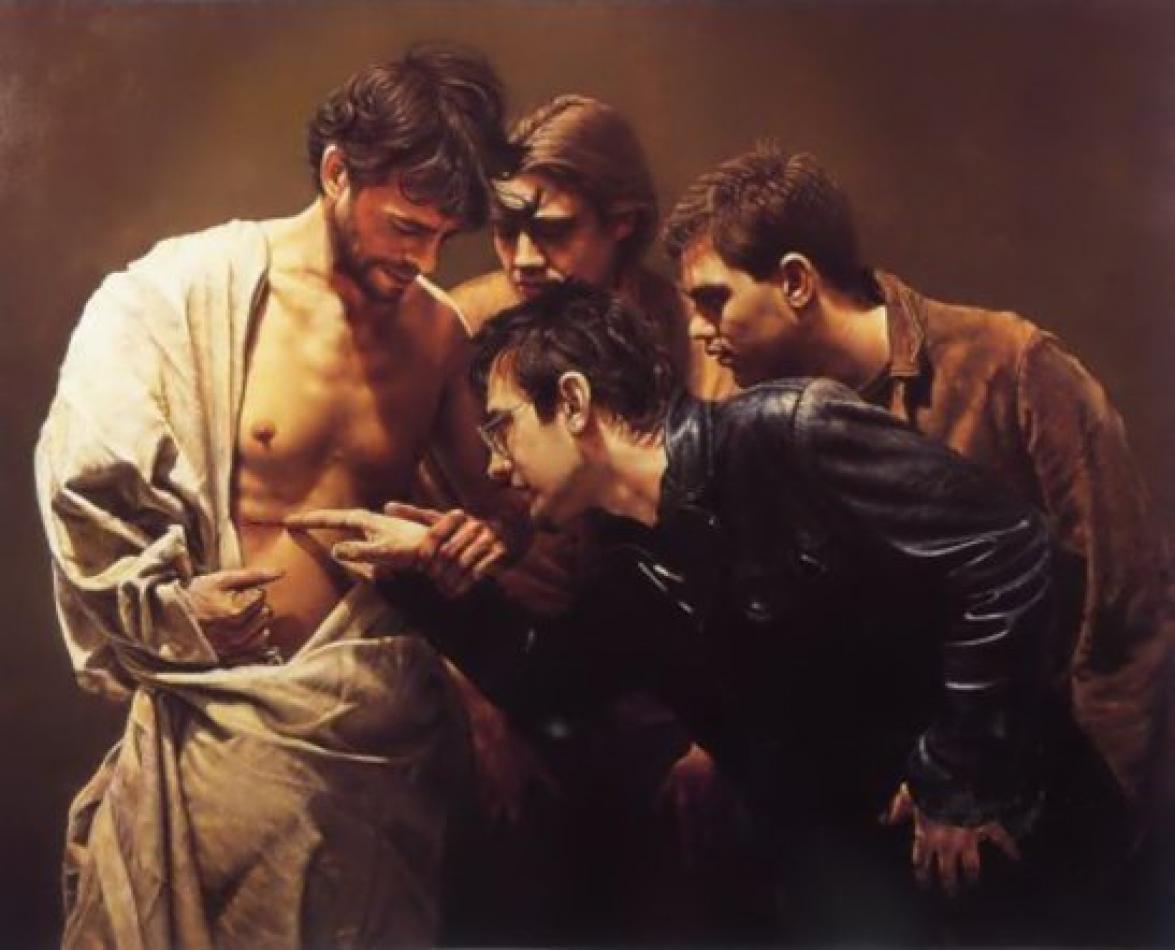Daniel Comboni
Comboni Missionaries
Institutional area
Other links
Newsletter
It is the month of April in the year 30 A.D. Two disciples of Jesus went to Jerusalem to celebrate the Passover. They have witnessed dramatic events: the execution of their teacher, a prophet, who was mighty in work and word. The days of this sad feast passed. They prepare to return to Emmaus when, early in the morning, someone run towards them with the shocking news: the tomb was found empty. (...)
Luke 24:13-35
GOSPEL REFLECTION
It is the month of April in the year 30 A.D. Two disciples of Jesus went to Jerusalem to celebrate the Passover. They have witnessed dramatic events: the execution of their teacher, a prophet, who was mighty in work and word. The days of this sad feast passed. They prepare to return to Emmaus when, early in the morning, someone run towards them with the shocking news: the tomb was found empty. Some women claim to have had a vision of angels and that Jesus is alive. At home, however, they have families waiting for them. It is spring and it’s the time to harvest barley and they must leave. Along the way, a traveler joins them. He accompanies them and in the evening something extraordinary happens.
The story of the disciples of Emmaus is one of the most beautiful pages of the Gospels. It introduces in a celestial world, where dream, instead of being dissolved, is transformed into reality. After this lovely first impression, however, perplexities and questions arise: Where is Emmaus? There was, yes, but twenty miles from Jerusalem, not ten as the text says (Lk 24:13). Some ancient manuscripts, probably to remedy this difficulty, speak of one hundred and sixty stage (about thirty miles), but it will create another problem: it transforms the two disciples into marathon runners.
It is also unlikely that having heard that something extraordinary had happened (vv. 21-24) the two left without having first checked what could really have happened.
Why couldn’t they recognize Jesus in the traveler? What sense has a miracle of this kind: is it used to create suspense? One notices that the text does not say that Jesus was hidden under a false guise, but that their eyes were kept from recognizing him … and it will be important to establish the reason for this blindness.
Why is the name of the second disciple not told to us? Did Luke already forget it?
Back in Jerusalem, the two recount to the apostles their experience of the Risen One. They were informed that the Lord appeared also to Simon (vv. 33-35). Then the story continues. While they are gathered and are talking about these things, Jesus appears in their midst. Astonished and frightened, they are convinced of seeing a ghost. They are unable to believe that he is alive. To convince them, Jesus must eat of the bread and fish in front of them (Lk 24:36-42). The reaction of the disciples is really inexplicable. They seemed taken by surprise as if nothing had happened before.
These are just some of the difficulties that are raised by a literal interpretation of the text. But some indexes orient us toward a less superficial reading. How could one not notice, for example, that the sentence: “When he was at table with them, he took bread, said the blessing, broke it, and gave it to them” explicitly recalls the celebration of the Eucharist? And, before sitting down at the table, the mysterious traveler also presides over a solemn liturgy of the Word with its three readings (“and beginning with Moses and all the prophets he explained to them in all the Scriptures …” [v. 27]) and his good sermon (“Were not our hearts burning within us when he opened to us the Scriptures …” [v. 32]). In short, he officiated a full-blown liturgy.
Then again, the phrase: “Is it not written that the Christ should suffer all this, and then enter his glory?” (v. 26) is the unopposed proof that the person who is talking is the Jesus already ascended to heaven. This situation, more than that of the two disciples of Emmaus, resembles that of the Christians of the communities of Luke. Let’s try to rebuild it.
We are in Asia Minor in the years 80-90. Almost all the witnesses of the Risen Lord have already disappeared. The Christians of the third generation are asking themselves: will it be possible for us to meet the Lord? How to testify that he is alive if we have never seen him with our eyes, nor touched him with our hands, and have never sat at table with him? Would we be led to believe just from what others have told us, as what happens in the courts where judges put their trust in credible witnesses? This, however, cannot be called an act of faith, but it’s the conclusion of a reasoning of common sense. We also would like to really meet the Risen Lord.
Let’s reread Luke’s story as a response to the aspirations and expectations of these Christians.
We begin with the name. One of them is called Cleophas (a very well-known figure in the early Church because he was the brother of Joseph, the “father” of the Lord) and the other? The other, could be an invitation to every reader to insert one’s name. It is an invitation to go with Cleophas along the path that leads to recognizing the Risen Christ present where two are gathered in his name.
The two disciples are sad: they have seen the collapse of their dreams, the failure of their plans. They expected a glorious Messiah, a mighty and triumphant king but found themselves in front of a loser. The rabbis taught that the Messiah would have lived a thousand years, Jesus instead was dead.
It’s the story of the Christian communities of Luke. They are persecuted, victims of abuse. They see the triumph of the works of death; the wicked have the better situation over the pure in heart. They find themselves in the same state of mind as the disciples of Emmaus. They also stop with sad faces.
It is our story. We too find ourselves sometimes in the same state of mind. It happens when we have to admit that cunning prevails over honesty; when we are forced to acknowledge the lie becomes the official truth, imposed by those in power; when we see the prophets silenced or killed. Even then, we stop, sad, resigned in the face of an inevitable reality, forced to admit that the new world announced by Jesus probably would never come true.
But can a community born of faith in the Risen One indulge in these thoughts of death and give in to sadness? Are the sleepy and distracted but disappointed faces of the many participants in our Sunday assemblies mean anything? Are they signs of certainty in the victory of life or discouragement and despondency?
The two disciples of Emmaus are very familiar with the life of Jesus. They make a perfect summary of it, identical to what was taught in the catechism of the early Church (vv. 19-20), but their synthesis has a serious flaw. It stops upon seeing the triumph of death. “Our leaders—Cleophas explains—handed him over to be sentenced to death and then killed him” (v. 20) and three days have already passed. This death is to be considered final.
Luke deliberately puts on their lips the thoughts of many Christians of his communities. They know well what Jesus did and taught. They considered him a wise person, one who, with his messages of peace and love, has changed the hearts of many people, but he ended up in death like everyone else.
Whoever thinks in this way discovers only the outward appearance, the historical events in the life of Jesus. He does not have faith in him because he does not believe in his resurrection, which cannot be observed and demonstrated. The consequence of this incomplete knowledge is sadness. Without faith in the resurrection, defeats are defeats, life ends with death, and is a senseless tragedy.
How to get to this desperate situation?
The two of Emmaus have responsibilities. They have made mistakes.
First of all, they left the community whose members continued to search for an answer to what had happened. They preferred to go on their own, convinced that no one can make sense out of certain tragedies.
They have not verified if the women’s experience could be enlightening for them.
Many Christians were behaving as such in the time of Luke: in front of difficulties and persecutions, some abandoned their communities; others, almost on principle, refused the answers that came from faith. They did not even verify if they could have logic and sense.
A third error: The two disciples of Emmaus did not have the slightest doubt that their ideas about the triumphant messiah could be wrong. They were stubbornly clinging to tradition, to what they had been taught. They were impervious to the surprises and novelties of God.
Jesus does not abandon the people who choose the roads that lead to sadness. He becomes their companion in the journey.
As it always happens, the Risen One is not recognizable (someone thinks of seeing a ghost; Mary Magdalene takes him for a gardener; by the lake, he is considered a skilled fisherman). It’s not about miracles. It is a way to present the new situation of one who entered into the glory of God. It is a completely different condition from that of this world. The life of the resurrected ones is not an extension of the present life and the human eyes cannot capture it. That is the reason why the evangelists say that it was Jesus, but he was no longer the same. It was Jesus whom they touched, with whom they had eaten and drank. He was the one who was dead: “Look at my hands and my feet and see that it is I myself” (Lk 24:39)—but he was completely different.
How do Cleophas and the unnamed disciple come to discover that Jesus, the loser, is the Messiah? How can they understand that life is born from death?
The way that the Risen Lord makes them travel is through the Scriptures: It is the Word of God that reveals the mystery.
Not having understood the Bible, the two disciples reason out as men. They cannot see with God’s eye that which happened. For this Jesus reminds them: “How dull you are, how slow of understanding! Is it not written that the Christ should suffer all this, and then enter into this glory?” (vv. 25-26).
The way of the cross is inconceivable and absurd for people. The only one who reads the Scriptures discovers that God is big enough to be able to extract from the great crime of men his masterpiece ofsalvation. It is not enough to read the Word of God. One must understand it. For this, it is necessary that somebody explains it and possibly does it, not as one who transmits an arid theological culture but as one “warming the heart.”
In the evening of that first “Sunday,” the disciples arrive home and Jesus is with them. When they were at table, he “took the bread, said a blessing, broke it, and gave each a piece” (v. 30). It is easy to understand what Luke wants to teach: the eyes of a Christian open and recognize the Risen Christ during the Sunday liturgical celebration.
In the story of the disciples of Emmaus, all elements of the celebration of the Eucharist are present: there is the entrance of the celebrant, then the Liturgy of the Word with the homily, finally, “the breaking of bread.”
Only at the time of the Eucharistic communion are the eyes of the disciples opened and they realize that the Risen One is in their midst. But without the Word, they would not have come to discover the Lord in the Eucharistic bread.
All must experience the encounter with the Risen One.
In the communitarian celebration they can contemplate him through the sacramental signs, but when they recognize him, he does not disappear, even if the physical eyes cannot see him.
A final important element of this passage: the disciples of Emmaus, as soon as they recognized the Lord, rush to announce their discovery to their brothers and sisters and with them proclaim their faith: “The Lord is truly risen …” It is, we can say, the final hymn with which the Sunday celebration concludes. Its notes accompany the disciples for the rest of the week. They are the expression of the joy that they will bring to all people.
I said that Luke wrote for the Christians in the communities of the years 80-90 A.D., and aimed to offer them the way to meet and recognize the Risen Christ in the “breaking of bread.” The way we are invited to travel today is not different.
Fernando Armellini
Italian missionary and biblical scholar
https://sundaycommentaries.wordpress.com
TWO KEY EXPERIENCES
With the passing of years, there spontaneously arose a very real problem in the Christian communities. Peter, Mary Magdala and the other disciples have lived through very «special» experiences of encounters with Jesus alive after his death. Experiences that for them brought them to «believe» in the Risen Jesus. But those who joined the group of followers later on, how could they awaken and nourish that same faith?
This is also our problem today. We haven’t lived through the encounter with the Risen One that the first disciples did. What experience can we count on ourselves? This is what the story of the disciples of Emmaus presents.
Two people are walking toward their homes, sad and heartbroken. Their faith in Jesus has been extinguished. They no longer hope anything about him. All has been an illusion. Jesus, who follows them without revealing himself, reaches them and walks with them. Luke presents the situation thus: «Jesus came up and walked by their side; but their eyes were prevented from recognizing him». What could happen to cause them to experience his living presence next to them?
What’s important is that these disciples aren’t forgetting about Jesus; «they are talking and discussing» about him; they remember his «words» and his «actions» as those of a great prophet; they let an unknown person go on explaining what had happened. Their eyes don’t open right away, but «their heart begins to burn within».
It’s the first thing we need in our communities: remember Jesus, plunge into his message and his deeds, meditate on his crucifixion… If in a given moment Jesus moves us, his words reach us within and our heart begins to burn: this is the sign that our faith is waking up.
It’s not enough. According to Luke, what’s needed is the experience of the Eucharistic meal. Though they still don’t know who he is, the two walkers feel the need for Jesus. They enjoy his company. They don’t want him to leave: «Stay with us». Luke underlines it joyfully: «Jesus went in to stay with them». In the meal their eyes are opened.
These are the two key experiences: feel our heart burn when we remember his message, his deeds and his whole life; feel that when we celebrate the Eucharist, his person nourishes us, strengthens us and consuls us. That’s how faith in the Risen One grows in the Church.
Jose Antonio Pagola
https://www.feadulta.com





